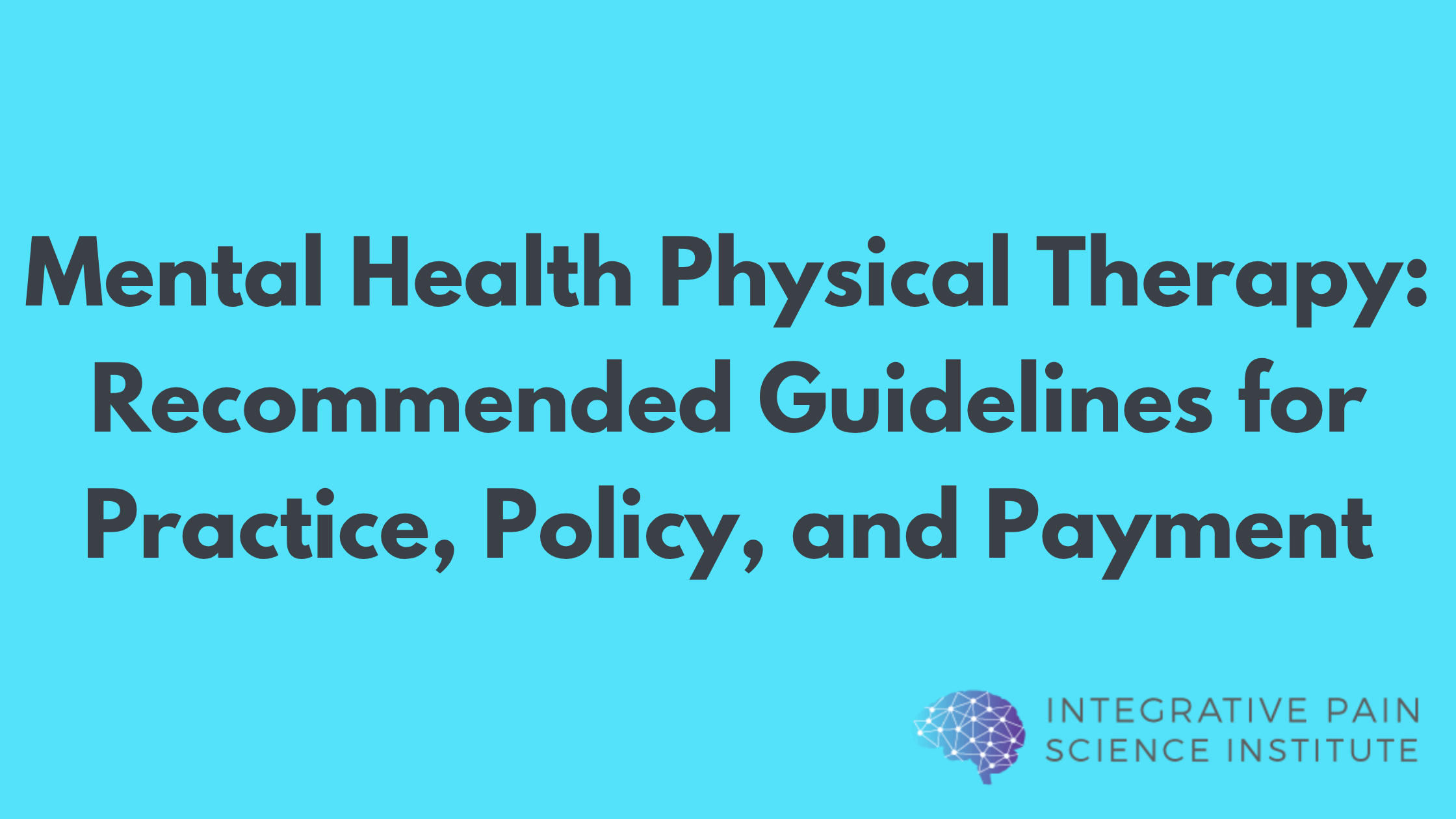It is well established that self-management is at the center of the recommended approach for treatment of patients with chronic pain which may include aspects such as increased participation in physical activity and exercise (1). It has also been shown that patients with chronic pain may be more likely to take a passive role in their pain management and are more likely to believe their pain is out of their control (2). Acceptance Commitment Therapy (ACT) can help to empower patients to make their own decisions based on what values they hold through psychological flexibility. The aim of ACT is not to reduce pain, but to reshape the relationship an individual has with uncomfortable thoughts, situations, and sensations (3).

A study in the Journal for Musculoskeletal Care aimed to examine the effects of ACT combined with exercise for the treatment of chronic pain. Participants completed multiple self-reported outcome measures relating to chronic pain and wore pedometers for the entirety of the 8-week program which consisted of weekly ACT sessions that aimed to enhance psychological flexibility, decrease pain avoidance behaviors, and encourage activity. While there was no control group included in this study, participants overall appeared to benefit from the treatment. Participants demonstrated increased daily step count as well as decreased healthcare utilization over time and reported an overall satisfaction with the interventions. A very encouraging finding is that these changes were maintained at a one-year follow up. Authors of the study suggest that these findings “may indicate that an intervention combining ACT with exercise may enhance an individual’s ability to self-manage their condition” (4). By utilizing an individual’s values to drive their goals, decisions, and actions you allow the patient to take control of their own health when they likely previously felt very out of control of their condition.
Dr. Tatta’s simple and effective pain assessment tools. Quickly and easily assess pain so you can develop actionable solutions in less time.
While delivering ACT in combination with other treatments such as exercise, it is essential that the clinician continues to consistently uphold the essence of ACT throughout. The goal is not to change a patient’s thoughts or to target symptom reduction and concurrent treatments should be implemented with these thoughts in mind. If combining exercise with ACT, limitations should not be put on time, activity, or intensity. Instead, patients should participate in physical activity or exercises that align with their own values and goals developed from their values. It is the patient’s decision the degree of unpleasantness they are willing to put up with and if it helps bring them closer to their established values.

Shelby McClure is a third year Doctorate of Physical Therapy student at Augusta University in Augusta, Georgia and will be graduating in May of 2020. She completed her undergraduate education at Auburn University in Alabama where she earned a B.S. in Fitness, Conditioning, and Performance in addition to a B.S. in Nutrition and Wellness.
Shelby began dancing at a young age which helped to shape her initial interest in health. During college, she worked as a dance instructor as well as a group fitness instructor, which eventually led her to pursue a career in physical therapy.
Throughout her time at Augusta University and subsequent clinical rotations, Shelby realized her passion for pain science and psychologically informed physical therapy. Shelby is currently completing a 4-week elective with the Integrative Pain Science Institute prior to her graduation.
Shelby is from the Atlanta, Georgia area where she currently resides with her husband of 2 years.
To learn more about Shelby, visit her LinkedIn.
REFERENCES
- Scottish Intercollegiate Guidelines Network. Management of chronic pain: SIGN publication no.136. Edinburgh2013.
- Mackey LM, Blake C, Casey M-B, et al. The impact of health literacy on health outcomes in individuals with chronic pain: a cross-sectional study. Physiotherapy. 2018;105(3):346-353. doi:10.1016/j.physio.2018.11.006.
- Hayes SC, Levin ME, Plumb-Vilardaga J, Villatte JL, Pistorello J. Acceptance and commitment therapy and contextual behavioral science: examining the progress of a distinctive model of behavioral and cognitive therapy. Behav Ther. 2013;44(2):180–198. doi:10.1016/j.beth.2009.08.002
- Casey MB, Cotter N, Kelly C, et al. Exercise and Acceptance and Commitment Therapy for Chronic Pain: A Case Series with One-Year Follow-Up. Musculoskeletal Care. 2020;18(1):64–73. doi:10.1002/msc.1444



